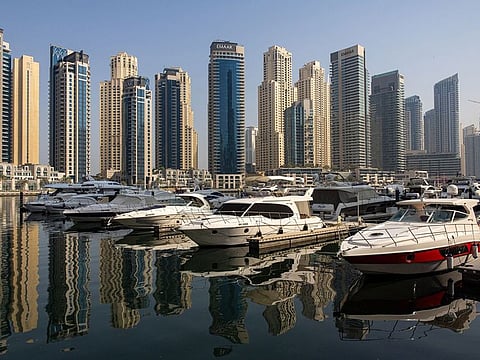Dubai property market should easily absorb more quality offplan launches
Focus on creating quality living spaces, and they should have no trouble selling

What can be said about the performance of the Dubai offplan market that hasn’t been said?
We are witnessing a boom in transactional activity, with a healthy mix of interest from end-user and investor.
New launches sell out in record time, and even offplan properties closer to completion have few to no resale units available. One of the major concerns from those looking at the industry from the outside is that we are part of another bubble about to burst, much like what we saw in 2008 and again in 2014.
I think that those concerns are overblown, to put it mildly. Dubai, as a city, has changed in the past decade, as have the economic situations surrounding it and its real estate market. In my view a busy offplan market is necessary to maintain a healthy economy.
Supply still catching up
The number one reason why we need more offplan launches is quite an obvious one – the population of the city is growing, and all of those people will need a place to live. Over the past couple of years, we have seen a widening gap between supply and demand, and it’s up to offplan to bridge that gap.
Over the past couple of years, we have seen a widening gap between supply and demand, and it’s up to offplan to bridge that gap.
According to Dubai Statistics Centre, the emirate’s population crossed 3.6 million in June this year, growing roughly 1.43 per cent from the end of 2022. That’s over 50,000 people in the first-half of the year alone.
It is estimated that 32,000 new residential units will be delivered by the end of 2023. If all the new residents of Dubai are large families, and all of the new units being released have more than four bedrooms, then the supply of units will comfortably accommodate demand. But the reality is different, and as the population is continuing to grow in the second-half of the year, there is still going to be a sharp undersupply.
For some form of equilibrium, one of two things needs to happen – more units coming in, or a reduction in the population. The latter is, of course, undesirable. We want more people to come here and invest into the city so it can continue to thrive.
The solution then is to ensure there is enough housing for everyone that’s coming here. More offplan launches means more units to satisfy demand.
Building better homes
If we look at it from the other side of the equation, the fact that offplan units are selling out quickly is a good sign for developers. It builds further confidence in their projects, incentivizing them to launch newer - and even better - developments, all of which will add to the supply of residential units.
Developers have also been paying attention to the nature of demand – in the aftermath of Covid, residents have become more keenly aware of the types of lifestyle options residence can offer. This has led to a rise in branded residences being operated by renowned hospitality brands.
Dubai has been at the forefront of that growth globally and has the highest concentration of branded residences in the EMEA region. The upshot of this is that even ‘standard’ residential projects are now being given an extra bit of polish and offer a level of quality and service that is easily comparable to a branded property.
Buyers branch out
This is borne out by the buying trends that we have seen for off-plan launches. Units have sold out in super-prime projects like Palm Jebel Ali, in slightly more affordable communities like The Oasis and The Valley, and as far afield as Ras Al Khaimah. Over the past 5 years, we have seen continued expansion into areas that would previously have been considered the outskirts of Dubai, but have become key residential communities.
Arabian Ranches, Jumeirah Golf Estates and Dubai Hills, for example, were considered to be out in the desert at some point. Now, they are thriving neighbourhoods that offer a diverse selection of properties and are well-connected to major hotspots.
Does this mean that buyers are just snatching up anything that’s available? Not quite – every project that’s sold out is being helmed by a reputed developer such as Emaar, Nakheel, or Ellington. In an area that has extremely high demand, such as Palm Jumeirah, a new or lesser known developer might be able to attract attention purely on the prestige associated with the location.
As we head out to areas that aren’t considered to be prime, buyers are being a bit more discerning. If a highly regarded developer is involved, their project is likely to sell out instantly. Otherwise, it could take several months for units to be sold.
Sustainable growth
People are fixating on absolute change in pricing when looking at the Dubai real estate, which presents both an inflated view of things and is a misrepresentation of what’s actually happening. Analyzing the market at a closer level shows us that there is healthy, consistent demand in the offplan and secondary sectors.
The rise of brand new communities such as Arabian Ranches III, The Valley and The Oasis provides excellent investment potential while the relaunch of Palm Jebel Ali will, over time, add an even bigger boost to the luxury segment. The push and pull between demand and supply is what has always driven the market, and will continue to drive it through a sustained period of growth.
Sign up for the Daily Briefing
Get the latest news and updates straight to your inbox





